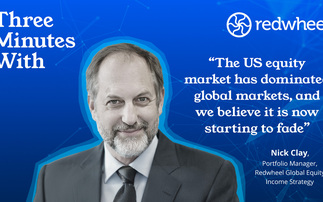PARTNER INSIGHT: Antoine Lesne, Head of SPDR ETF Strategy & Research at SSGA, reveals why the size and heritage of group's SPDR ETF range is helping it move ahead of its peers and how its fixed income offering can help investors navigate today's low yield environment.
What is behind the marked increase in ETF popularity in recent years?
ETFs are now used by an increasingly broad range of investor types - from wealth managers and private banks, to asset managers, pension funds and insurers, as well as robo-advisers, IFAs and individual investors. Part of their appeal is they can be used in a variety of ways: as the foundation of a portfolio, or to implement more tactical and sometimes very specific ideas.
In addition, they are low cost, offer diversification within a single product (all ETFs track a diversified index), are transparent (investors can see the exact holdings on a daily basis), and there is a wide range to choose from.
There has been a lot of speculation in the press about the growth of passive investments compared to the challenge active managers face in order to consistently beat benchmarks; particularly after costs are taken into consideration. Our view is that investors should consider both active and passive approaches: use an active approach where they can find managers who regularly provide alpha, and invest in ETFs or index funds where those active managers are harder to find or where the need is for a simple and transparent beta exposure.
Which ETF sectors have seen the most growth?
As the world's third largest ETF provider, we have seen increased flow into the majority of our range, in Europe, Asia Pacific and the US. In particular, we have seen substantial volumes move into our fixed income ETFs: SPDR gathered the second largest volume of assets last year in Europe with $2.3bn in flows.
Over the last couple of years, fixed income ETFs have represented the main growth area for the industry as a whole and in EMEA particularly.
The ability of bond ETFs to provide liquidity and perform as expected through numerous periods of market turbulence (such as the global financial crisis, the problems with Third
Avenue, and the US taper tantrum in 2013) has provided reassurance. We have seen billions of dollars move into fixed income ETFs as a result to represent almost $740bn as of end September 2017*.
What are the advantages of using SPDR ETF?
The skill of our portfolio managers that run ETFs is critical to tracking a benchmark accurately and consistently. This is an important consideration that is sometimes overlooked by some investors. Moreover, within Europe, SPDR is probably best known for four things.
Firstly, the size and heritage of the US business, including our ETFs focused on the S&P 500 (we launched this as the first major ETF in 1993), gold, and other sector exposures which all remain market leaders in their respective areas.
Secondly, within Europe, we have a very competitive fixed income offering, in terms of the breadth of funds on offer, coupled with the skill of the porfolio managers managing the funds.
Thirdly, SPDR was the first ETF provider to offer a full range of sector-focused ETFs, allowing investors to gain exposure to sectors on a global, US or European basis.
Finally, our Dividend Aristocrats range is one of the largest smart beta (ie, non-market-cap weighted) ranges in Europe. All of our funds are physically backed, which is welcomed as many investors are reluctant to use synthetic ETFs due to potential counterparty risk and their associated lack of transparency.
Meanwhile, our ETFs' long track records mean we can demonstrate how they have performed over multiple market cycles.
How are SPDR ETF strategies evolving for a low rate environment?
As the yield from fixed income instruments, in particular government bonds, has shrunk, we have observed a shift towards exposures like emerging market debt local currency and high yield. However, we have also seen investors looking for yield in the equity space, in particular through our ETFs that track Dividend Aristocrats indices from S&P. The strategies focus on dividend growth and stability, potentially allowing investors to derive an income stream.
Focusing on the technical aspect of the income element, all of our fixed income ETFs distribute dividends twice a year, allowing investors to capture part of the coupons earned by the fund. Meanwhile, as the direction of rate changes have been more challenging to forecast - even if the bias may be for slightly higher yields post-quantitative easing - we have developed a suite of maturity bucket ETFs both in dollar and euro Treasury indexation as well as short and intermediate maturity exposure in investment grade dollar and euro corporate.
Lastly, short-dated corporate bond exposures in sterling in the 0-5 year area have proven popular with British investors willing to manage the interest sensitivity of their bond portfolios. What are the benefits of using fixed income ETFs in the current market?
It can be hard for investors wanting to build smaller, diversified portfolios to find liquidity in certain parts of the bond market. Fixed income ETFs provide a transparent and simple way to buy a diversified basket of bonds for a low cost.
When it comes to managing volatility and market movements, the ability to trade intra-day is a valuable feature for investors wanting to move quickly. Having the options to move from all maturity or longer maturity exposures to lower duration exposures can help navigate periods of higher volatility.
The proliferation of offerings and exposures in the fixed income ETF universe allows investors to actively allocate through volatile times.
Click here to read more about why the size and heritage of group's SPDR ETF range is helping it move ahead of its peers and how its fixed income offering can help investors navigate today's low yield environment.











